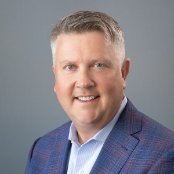Reverse Mortgages: A closer look at non-recourse protection
With the federally insured reverse mortgage known as a Home Equity Conversion Mortgage (HECM*), the non-recourse protection can be summarized as follows:
The FHA guarantees that neither the qualified borrower nor their estate will owe more than the home is worth at the time it is sold.
Although the HECM loan balance typically rises, this feature should be comforting to every homeowner and their heirs. They can be assured that if a homeowner lives a very long time or if property values drop, nobody will be harmed by the loan being “upside down” or “under water.” This is a primary consumer protection that can make HECMs so attractive. It can remove a risk associated with homeownership.
I frequently receive requests to verify the existence of the non-recourse feature due to skepticism about this claim. So, here is the relevant language from HUD:
“The HECM is a ‘non-recourse’ loan. This means that the HECM borrower (or his or her estate) will never owe more than the loan balance or the value of the property, whichever is less, and no assets other than the home must be used to repay the debt.”
Some explain this feature as “the home stands alone for the debt, not the homeowner.” Unfortunately, many misunderstand this phrase to mean that the bank takes the home. That is not true. The homeowner retains title to the home through the life of the loan and can sell it at any time with no prepayment penalty. The non-recourse feature is simply there to protect the homeowner and the lender from “crossover losses,” where the sale of the home is not sufficient to pay off the loan balance. At the time the homeowner wishes to sell, they cannot be held responsible for the portion of the loan that exceeds the home’s value.
Who pays for this?
Before you say this is too good to be true, this is why the FHA collects mortgage insurance premiums. FHA’s Mutual Mortgage Insurance Fund (MMIF) is a collection of funds created specifically for this purpose. All FHA loans (Traditional and HECM) contribute to this fund through the insurance premiums that are charged at closing and also paid by the lender and added to the loan balance each month.For more information
If you’d like to learn more about the possible protections and advantages of a reverse mortgage, or have any questions, contact a Movement Mortgage loan officer near you today!*This material has not been reviewed, approved, or issued by HUD, FHA, or any government agency.



